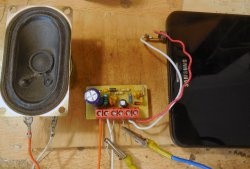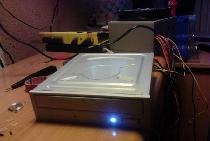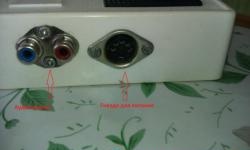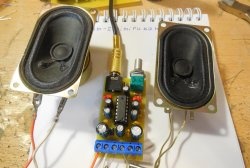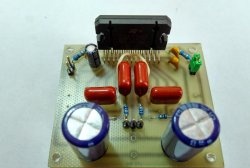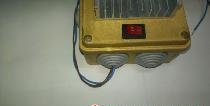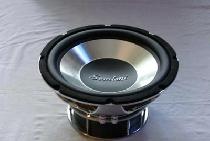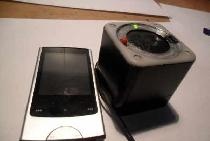Today I would like to tell you about an amplifier which, in my opinion, is an excellent solution in terms of price-power-quality ratio. And so, today we have the STK series microcircuit in the leading role. STK microcircuits are hybrid microcircuits that are made on unpackaged transistors using thick film technology and laser adjustment of the values of all resistances. I, like quite a large number of radio amateurs, consider these amplifiers to be one of the best and surpass the well-known TDA and LM in sound quality. Of course, you can also remember tube amplifiers, but this is a rather vague topic, and besides, today it is no longer easy to find worthwhile tubes and transformers, and if you do, the prices for such exhibits are not the lowest. Well, as for microcircuits, they are just gaining momentum and finding the necessary wiring parts for them is not difficult.If you dig deep into the industry and consider the range of microcircuits that most companies install on their sound-reproducing devices, you can see an interesting trend, for example, if you consider almost any budget-level speaker system (1000-2000 rubles), then at best you will find tda7294 or tda2050 there . Manufacturers resort to such solutions in view of the fact that microcircuits of this series are not picky about power supply, they require an extremely small amount of external wiring (resistors, capacitors, coils), and sometimes they do not require any at all. If you try to look at more expensive and high-quality speakers, then in most cases you will see either transistor amplifiers or those same STKs.
In this article we will look at the STK402-120S microcircuit. One of the advantages of the “STK402-020...STK402-120” line is that each of these microcircuits has absolutely the same wiring, and the last value (..120) indicates the maximum power that this microcircuit is capable of provide (120W). This means that everyone will be able to choose the power that he needs, and if it no longer suits him, it will be enough to replace only the microcircuit with a higher rating and, in some cases, the power transformer with a higher voltage.
And so I think it’s worth moving on to practice and we’ll start with the parameters of the entire model range:

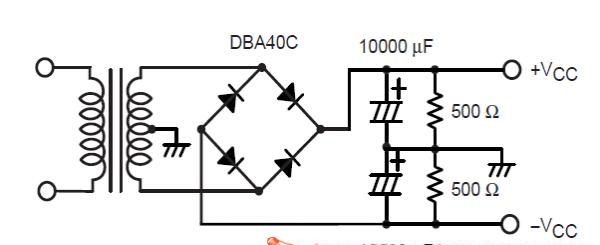
Power supplies of this type have a minus, a plus, and a ground (case).The voltage indicated in the parameters, namely +-39 V, is the voltage that should be between plus/minus and ground, i.e. There should be 78 V between plus and minus.
Then consider the circuit of the amplifier itself: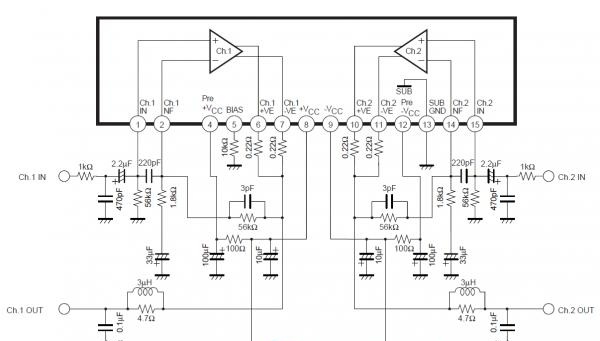
Output resistors of 0.22 Ohm and 4.7 Ohm must have a power of at least 2 W, the rest can be taken at 0.25 W. Also, the maximum voltage of electrolytic capacitors of 100 and 10 microfarads should be higher than the supply voltage.
Well, now I think we can move on to assembly. I was partially lucky and got my hands on an old music center from which quite a few of the parts were borrowed.
Again, let's start with the power supply. This was the main part that I borrowed.
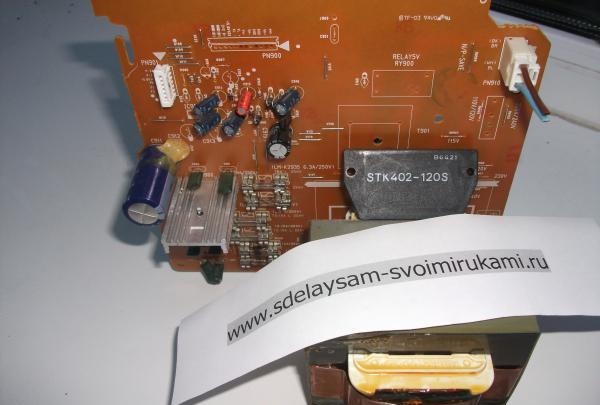
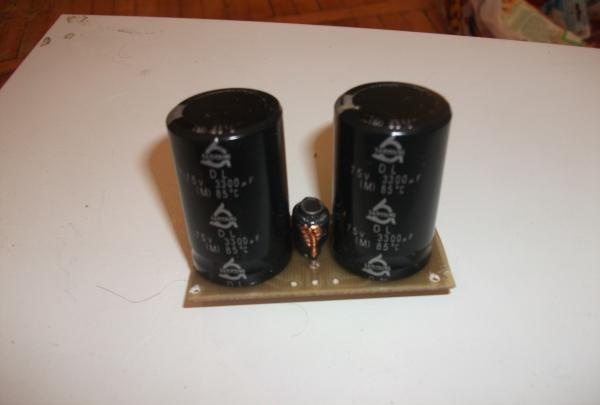
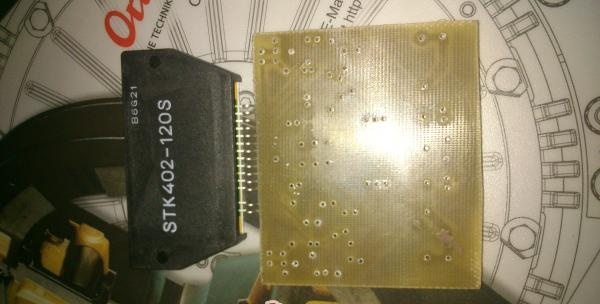

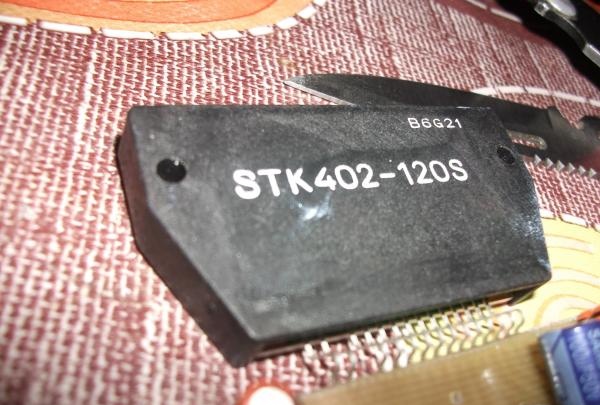


Here is the final photo, so that no questions arise, I’ll say right away that most of the non-polar capacitors in this case are in the same cases as resistors. In addition, this photo is missing two 4.7 Ohm output resistors.
With this, most of the work has come to an end; all that remains is to remove all the components into the case and attach the microcircuit to the radiator.
In my case, I decided to use the same case from the music center.
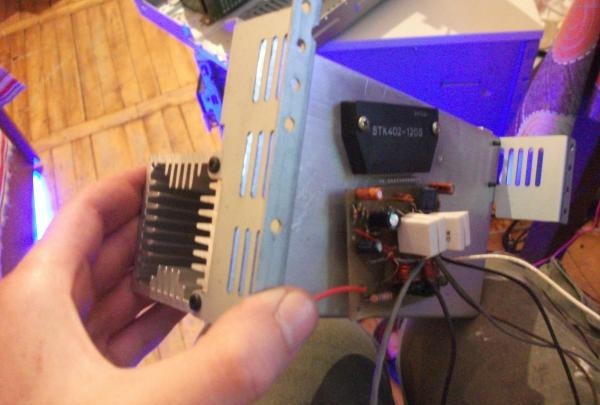
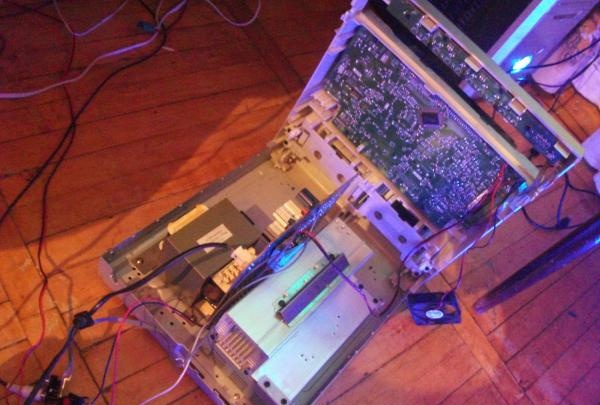


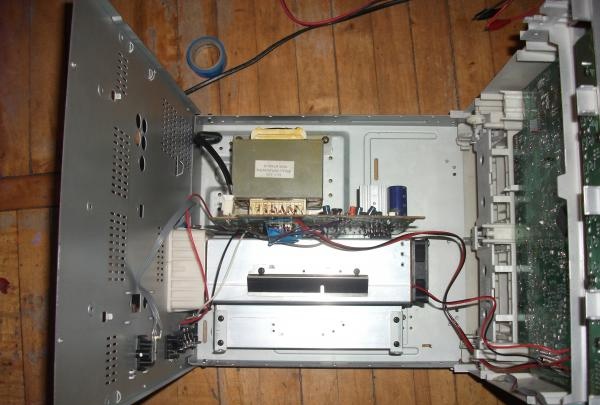
If the entire circuit has been soldered correctly and the correct power has been supplied, the amplifier will work immediately without any adjustments.And in the end, we got a fairly high-quality amplifier that can fully satisfy the need for powerful and high-quality sound. I think many people like me, after using amplifiers on STK, are unlikely to return to TDA or LM.
